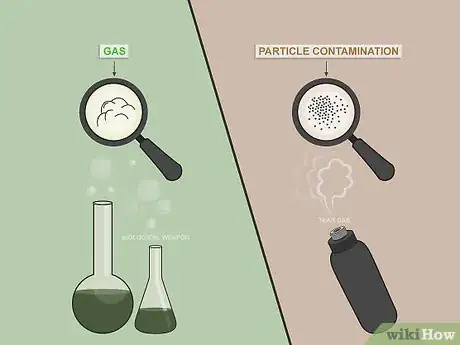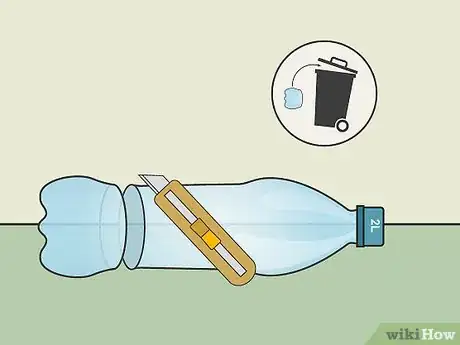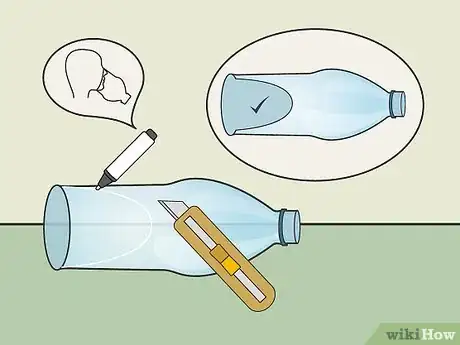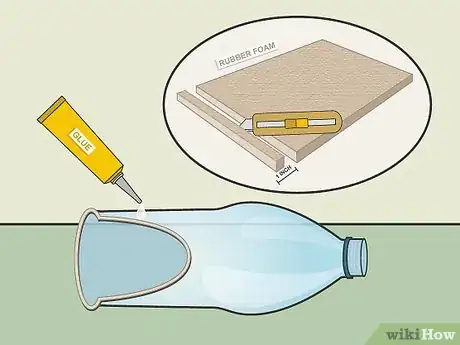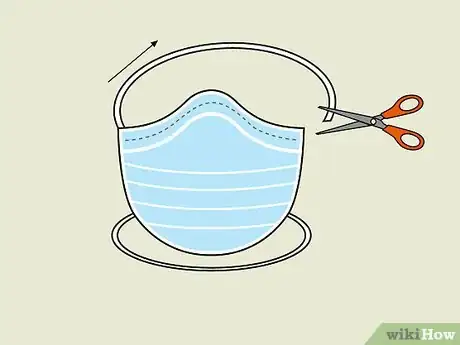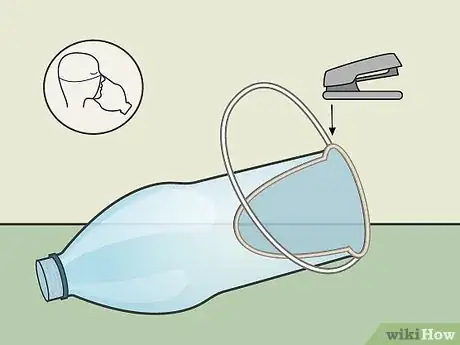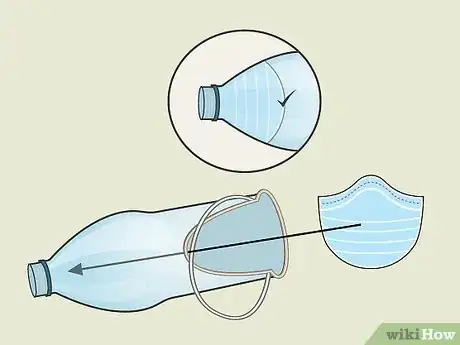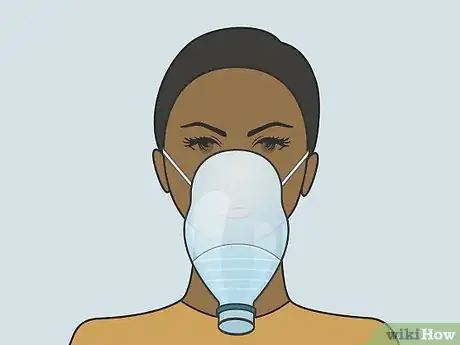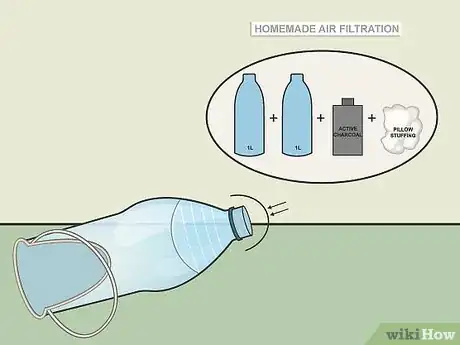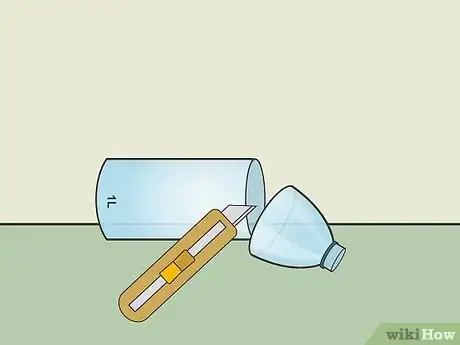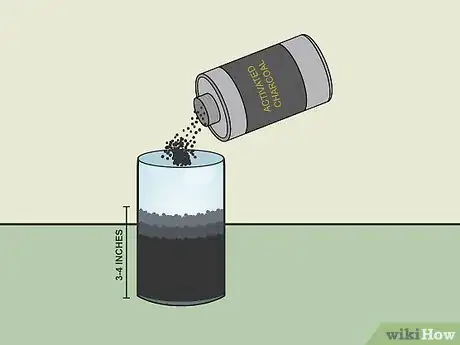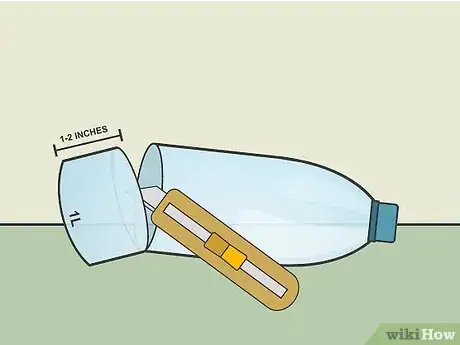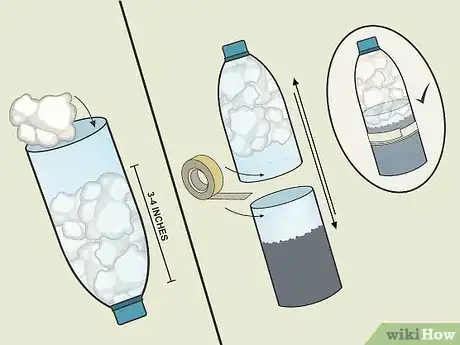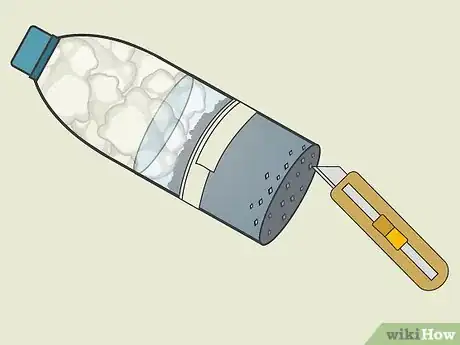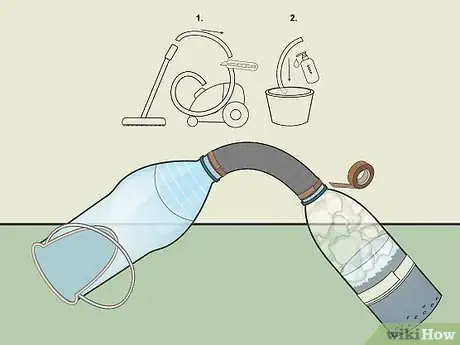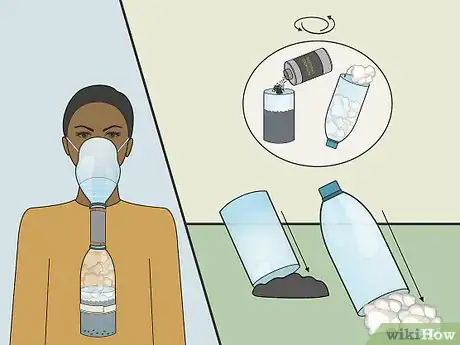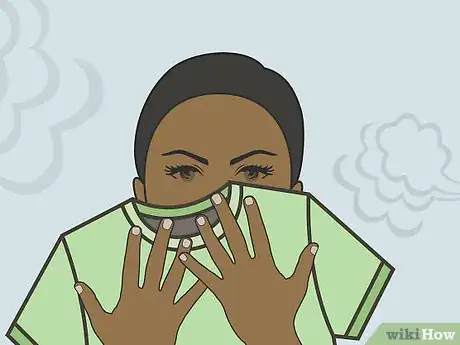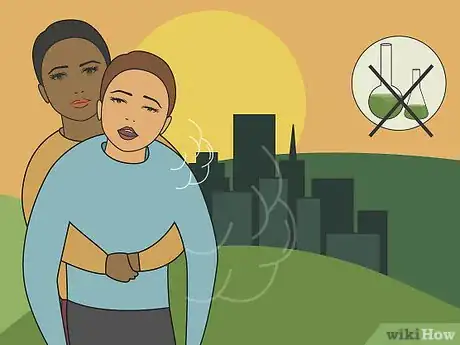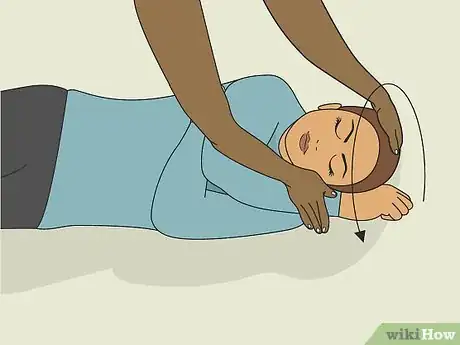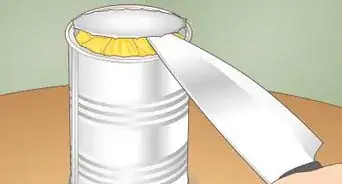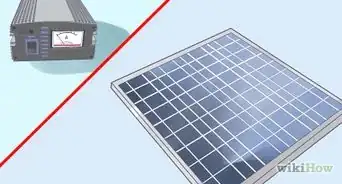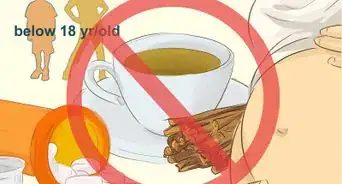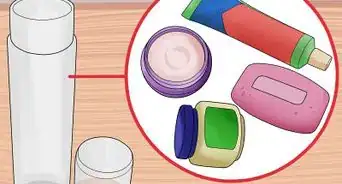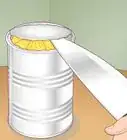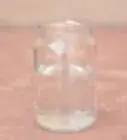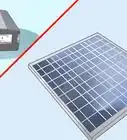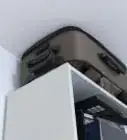wikiHow is a “wiki,” similar to Wikipedia, which means that many of our articles are co-written by multiple authors. To create this article, 29 people, some anonymous, worked to edit and improve it over time.
There are 9 references cited in this article, which can be found at the bottom of the page.
wikiHow marks an article as reader-approved once it receives enough positive feedback. This article has 11 testimonials from our readers, earning it our reader-approved status.
This article has been viewed 253,751 times.
Learn more...
Whether you are want to defend yourself from the apocalypse or against a round of police tear gas, having your own gas mask prepares you for any airborne chemicals you might encounter. While professional gas masks are much more reliable, creating your own mask in a pinch is an easy way to stay safe. It won't protect you against everything, but a homemade gas mask can help protect your face and lungs in an emergency.
Steps
-
1Know the difference between gas and particle contamination. Tear gas is actually a dust that is sprayed into the air,[1] whereas biological weapons are generally gases. While it is incredibly difficult and expensive to completely protect yourself against gases, you can easily create a barrier against particles at home.
- Toxic ash from volcanoes, tear gas, and dust are all particle contaminates.
-
2Cut the bottom off of a transparent 2-liter soda bottle. Using a razor blade, cut the bottom inch off of a large bottle and discard the bottom.[2]Advertisement
-
3Cut a U-shaped opening for your head. Use a marker to draw a “U” across the front of the bottle, cap side down. This needs to fit snuggly across your face, stopping roughly at your temple and below your chin. Make sure you leave 5–6 inches (12.7–15.2 cm) between the bottom of your cup and your chin. Cut along your outline with your razor blade.
- Start smaller than you think you need – you can always cut more away later.
- The bottle should fit snuggly across your face, as this prevent gas from getting into your eyes.[3]
-
4Create a protective seal around your face with rubber foam. Glue 1 inch (2.5 cm) of rubber form insulation around the edges of your gas mask to create a seal. This will keep contaminated air away from your eyes and nose. Take your time with this step, trying on your mask multiple times to make sure it sits snugly across your face.
- You can purchase rubber foam online or at large hardware stores.
- If you can’t get your hands on rubber foam, use several layers of tape around the edges, or strips of fabric from an old t-shirt.
-
5Remove the elastic bands from your hospital mask. Cut them near the bottom, as you will need them later to attach the mask to your face.[4]
-
6Staple the elastic bands to your mask. Attach the elastic bands near eye level so you can securely keep the mask on your face without your hands.
-
7Push the hospital mask into the bottom to the bottle. This is your filtration device.[5] Place the hospital mask, preferably an N95 particulate mask (available online or at a nearby health supply store), at the bottom of your gas mask.
- Seal the edge of the mask to the bottle with glue to prevent air from bypassing the mask.
-
8Wear your new gas mask. Attach it to your face, making sure there are no holes in the insulation that would allow contaminated air to your face. Make sure the bottle cap is off, and breathe in the clean air.
-
1Attach a homemade air filtration system to your mask to protect from some gases. While this system is not as powerful as a military-grade air mask, it can successfully filter out some toxins as well as all particle-based contaminates like tear gas.
-
2Cut off the top of a 1-liter bottle. Use a razor blade to slice off the top of the bottle, leaving an open cylinder. You can use any type of plastic bottle, but a 2-liter bottle will usually be big and unwieldy.
-
3Fill the bottom of the bottle with 3–4 inches (7.6–10 cm) of activated charcoal. Activated charcoal absorbs fumes and gases from the air, providing an effective barrier against gases. While not perfect, charcoal can filter out chlorine and carbon-based chemicals.[6]
-
4Cut the bottom off another 1-liter bottle. This should be the same size bottle as before. Slice 1–2 inches (2.5–5.1 cm) from the bottom, leaving as much of the top as you can.
- Leave the cap on.
-
5Fill the top of the bottle with 3–4 inches (7.6–10 cm) of pillow stuffing. This will remove any physical contaminants, like dust, ash, or tear gas, from your air. You can also use strips of old t-shirts, socks, or cotton balls.[7]
- Slide the bottles together and tape them shut. If you used the same sized bottles you can slide one into the other, creating a seal. Tape the bottles together so they stay shut. This is your air filter!
-
6Poke 6-7 holes in the charcoal end of your filter when you’re ready to use it. Using a razor blade, cut holes in the bottom of the filter to allow air in.
- Activated charcoal will absorb moisture from the air if left uncovered, making it useless, so only cut the holes when you need the filter.
-
7Use a rubber hose to connect the bottom of your air mask to your filter. The easiest way to connect your filter to your gas mask is with an old vacuum hose. Clean it with soap and water and then attach it with duct tape around the ends of your filter and gas mask.
- Because the charcoal could absorb the moisture from the air, becoming useless, only remove the cap from your filter when you need it.
-
8Replace your activated charcoal with each use. Activated charcoal absorbs chemicals and moisture, so it is useless after it has filled up. After every use or prolonged exposure to air you need to replace it with new charcoal.
-
1Cover your nose and mouth with a t-shirt if you have no other protection. A t-shirt can actually protect you from large particles, like dust or tear gas, though not perfectly. Try to create as perfect a seal as possible using both hands to keep the shirt over your nose and mouth.[8]
- Bandanas, towels, and blankets will provide similar protection in an emergency.
- A simple piece of fabric can save your life against ash and dust from a volcanic explosion.
-
2Call poison control immediately. If you or someone you know feels light-headed, nauseous, or experiences seizures or loss of consciousness after inhaling a chemical, make a note of the chemical and call poison control immediately.
- In the U.S., poison control can be reached at the number 1-800-222-1222.[9]
-
3Move immediately to fresh air. If the victim is able to move, get them to fresh clean air as soon as possible. Stay away from the source of the chemicals.[10]
-
4Turn unconscious victims on their side with their face down. This is called the “recovery position.” Roll unconscious people on their sides, using their upper leg to brace them. Make sure their mouth faces down so that they can easily expel anything that comes up. Wait for emergency services and follow their directions.[11]
Community Q&A
-
QuestionIs there anything else I can use other than charcoal?
 Community AnswerA rag saturated in vinegar will help with dust and teargas.
Community AnswerA rag saturated in vinegar will help with dust and teargas. -
QuestionWhat happens if that gas mask breaks while there is a gas leak?
 Community AnswerAlways have duct tape on hand. This can be used for scratches, leaks and even full-on breaks. When the mask part near your eyes cracks, breaks etc., and you can't see, cut it off so there is only plastic covering your nose, then duct tape it to your face.
Community AnswerAlways have duct tape on hand. This can be used for scratches, leaks and even full-on breaks. When the mask part near your eyes cracks, breaks etc., and you can't see, cut it off so there is only plastic covering your nose, then duct tape it to your face. -
QuestionWhat should I do if I breathe toxic fumes?
 Community AnswerMove to a place with fresh air and contact a poison control center immediately. In the United States, your emergency contact is the American Association of Poison Control Centers which can be reached at 1-800-222-1222. Keep a list of emergency numbers in an easily accessible area of your home.
Community AnswerMove to a place with fresh air and contact a poison control center immediately. In the United States, your emergency contact is the American Association of Poison Control Centers which can be reached at 1-800-222-1222. Keep a list of emergency numbers in an easily accessible area of your home.
Warnings
- Some substances, such as organophosphates like sarin, are absorbed through the skin as well as through breathing, and a gas mask may not be effective against them.⧼thumbs_response⧽
- Remember to replace your activated charcoal after use, as it will become useless after it absorbs chemicals.⧼thumbs_response⧽
- This DIY mask is not a replacement for military or commercial grade gas masks, and only has limited effectiveness.⧼thumbs_response⧽
References
- ↑ https://www.ncbi.nlm.nih.gov/pmc/articles/PMC1127513/
- ↑ https://www.youtube.com/watch?v=dvlryShN69A
- ↑ http://www.survivopedia.com/diy-gas-mask/
- ↑ https://www.artofmanliness.com/articles/make-improvised-gas-mask/
- ↑ https://www.artofmanliness.com/articles/make-improvised-gas-mask/
- ↑ https://www.businessinsider.com/how-to-make-a-gas-mask-2018-5
- ↑ https://www.businessinsider.com/how-to-make-a-gas-mask-2018-5
- ↑ http://www.survivopedia.com/diy-gas-mask/#
- ↑ https://aapcc.org/
About This Article
To make a gas mask, start by cutting the bottom off a 2-liter soda bottle and discarding the bottom. Then, draw a "U" shape for your head on the side of the bottle with the cap facing down. When you're done, cut along the lines with a razor blade and try the mask on to make sure it fits snugly. Next, glue rubber form insulation, which you'll find at a hardware store, around the hole to create a seal for your face. Finally, staple the elastic bands from a hospital mask on either side of the bottle and push the hospital mask into the bottom to the bottle to seal it. For tips on how to treat exposure to gases or chemicals, keep reading!
